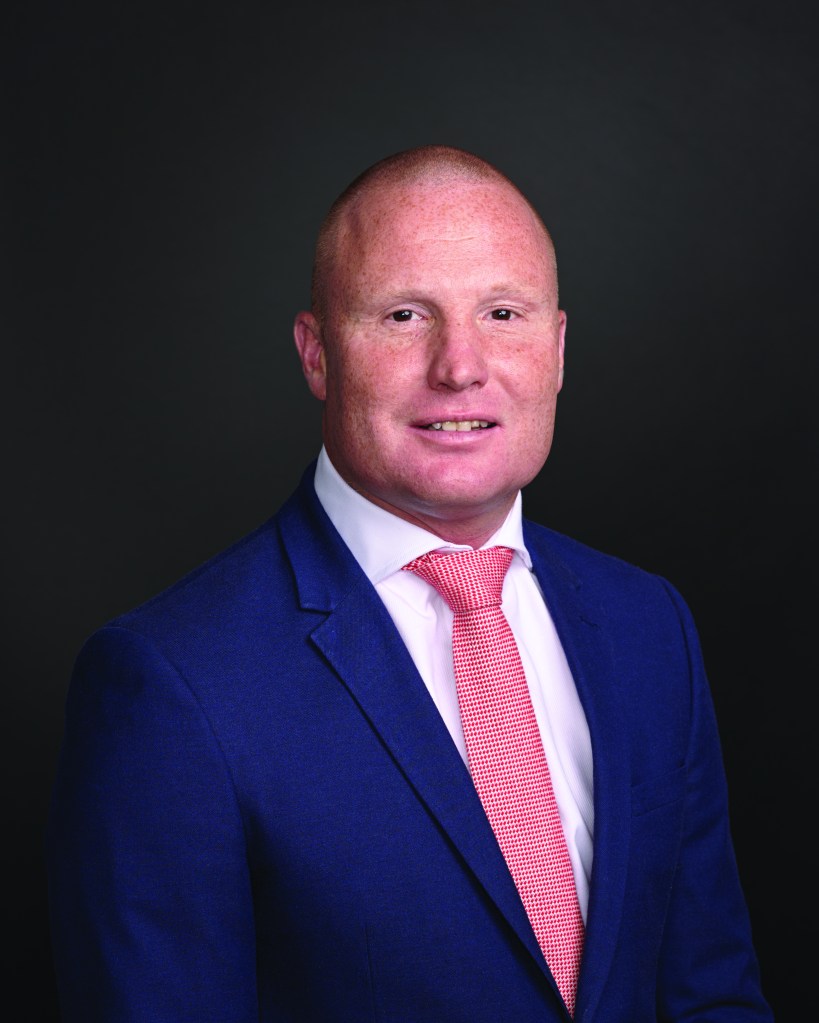Alternative future: CMC’s Andy Rogers on picking tomorrow’s investment themes
While high-net-worth investors have historically been left to choose between bricks-and-mortar property or stocks, an explosion in available options has irreversibly changed the game. CMC Markets’ Director of Stockbroking, Andy Rogers, says future investors will have far greater choice and flexibility in what they choose, making disciplined research essential.
BRANDVOICE – SPECIAL FEATURE

As interest rates begin to normalise and the thirst for both innovation and infrastructure accelerates, alternative markets are gaining more attention from investors who were previously locked out of them.
Alternative investments – such as commercial property, private equity and debt, and infrastructure – have long been the domain of sovereign wealth funds and superannuation funds, with retail investors more limited in their access and choice. But the landscape has changed dramatically in recent years, with thousands of options now at retail investors’ fingertips, says CMC Markets’ Andy Rogers.
As a result, investors have the potential to tap into some of the benefits of everything from property to multi-billion-dollar infrastructure projects, such as toll roads and airports, without the massive capital investment and high trading costs. They can choose to trade in and out easily through listed products, including real estate investment trusts (REITs) and exchange-traded funds (ETFs), says Rogers.
“With the cost of entry into residential property, such as stamp duty and legal fees, that money’s not working for you straight away. With listed products, that capital can go to work immediately.”
Nonetheless, due diligence is key, he says.
“The average person would still see property as a residential investment in bricks and mortar, but when you invest through an exchange-traded process, it needs to be broken down further to really dissect what you’re looking to invest in. Some things are easier to access than others,” he says, noting there are thousands of options at retail investors’ disposal.
Weighing up interest rates

The current environment may make property assets more appealing, given the view that global interest rates are stabilising. As a general rule, steady rates give investors more certainty and confidence, Rogers says.
While there are few indicators that broad quantitative easing is on the cards, many central banks are adopting neutral stances regarding monetary policy. The US Federal Reserve is waiting for more data, the Bank of England has noted that rate stability could be achieved by mid-next year, and the People’s Bank of China has promised it will speed up policies if needed, to respond to economic challenges (without explicitly mentioning rates).
“With property investment, there’s one thing that’s correlated to performance generally and that’s the impact of interest rates,” he says. “If you perceive that global interest rates or even Australian interest rates are going to be falling, that’s generally positive for the property sector because of the capital-intensive nature of investing in property.”
Rogers says REITs and property ETFs have also been known to give investors ways to further capitalise on low to falling rates.
For example, some investors have chosen ultra-low-rate markets, such as Japan or Sweden, to strip out the impact of rates on returns, while controlling for currency risk.
However, Rogers notes that not all property is equally sensitive to interest rates. For example, certain REITs can often pass on the cost of inflation, depending on the type of property and lease terms.
The liquidity factor
The broadened investment menu means Australians can be more nuanced in their approach to their chosen asset classes, Rogers says. He uses the Australian Securities Exchange’s (ASX’s)
Investment Products Monthly Report to track performance.
Two red flag indicators Rogers likes to look at are how often instruments are turned over – transaction volume, and the number of trades. He notes that it’s important to recognise that REITs can still be illiquid, like bricks-and-mortar, due to their underlying assets.
“If you’re seeing a REIT or an ETF with a very small number of trades and the volume is similar to the size you would buy, that can be a warning sign to say ‘look, this thing doesn’t turn over, there’s no liquidity’,” he says. “It means if I want to suddenly sell and then use the money elsewhere, it needs to be liquid so that I can get the right price.”
Emergent themes

While CMC’s one-million-plus investors and traders all have their own processes and themes, Rogers has seen growing interest in data centres.
“Obviously with AI, there’s so much demand on data centres,” he says.
“When you’re using ChatGPT, you are consuming compute at quite a heavy level, and the more people adopt it, the more people use it as part of their day-to-day, the more data centres that will be needed,” he says. “And it’s not only AI, you’ve got your cloud storage, your photos on your phone; everybody’s just using more and more storage. The challenge is determining whether demand falls short of, meets, or exceeds data centre supply, or whether AI becomes more efficient, as demonstrated more recently with the launch of Deepseek, which has been viewed as a headwind for the sector that may be overblown.”
“We’ve seen interest in REITs and companies linked to that trend.”
Popular instruments include US multinational data centre Equinix and Australia’s biggest property company, Goodman Group.
Rogers says there has also been increasing interest in uranium stocks to solve power issues. “Data centres, which are buildings of high-density computing, consume enormous amounts of power due to energy-hungry GPU and CPU chips, which are always on, and because of the significant cooling required to keep this kit from overheating,” he says.
Looking forward: The power of choice
As an experienced investment specialist, Rogers has witnessed the market’s seismic shift to become more flexible and investor-centric. Investors can now trade most of the day and adopt niche and narrow themes to get exposure to property.
“If you think the U.S. property market is about to bounce back, you can find a REIT in that region and get exposure right away, even if it’s 10 pm Sydney time,” he says.
“Retail investors have the potential to tap into alternative investments such as commercial property, private equity and debt, and multi-billion-dollar infrastructure projects.”
Andy Rogers
CMC is introducing a screener, which will enable investors to filter products by country and type of instrument, providing a granular view of potential investment opportunities. Given that the trading platform has 40,000 instruments, the process is becoming more important, he says.
“What we do is we don’t just give you one bit of information; we give you multiple data points from independent providers so you can collectively make a balanced decision. This research and thematic insights were previously the reserve for customers who were ultra-high-net-worth individuals or family offices. They really serviced the elite, but today the average everyday person can get that service.”
Ultimately, Rogers believes the future of capitalism will involve more choice, freedom and flexibility – choosing the right tools and process will be key.
For more information, visit cmcmarkets.com/en-au
This article is for general information purposes only and does not take into account your personal objectives, financial situation or needs. Seek independent advice and consider the relevant Terms and Conditions at cmcmarkets.com/en-au when deciding whether to invest in CMC Markets products. CMC Markets Stockbroking Limited (ABN 69 081 002 851, AFSL No. 246381).